Penguins are flightless seabirds from the order Sphenisciformes and family Spheniscidea. There are 17 to 19 living species of penguins that almost exclusively inhabit the Southern Hemisphere except for the Galapagos penguin (endemic to the Galapagos Island of Ecuador), which is found on the north side of the equator. Their primary predators are sea leopards, killer whales, sharks, and sea lions. Some birds of prey in their habitat range take their chicks and eggs. Here, we gathered information about what eats penguins, and what eats penguins in Antarctica, Australia, New Zealand, America, and Africa.
What Are The Predators Of Penguins
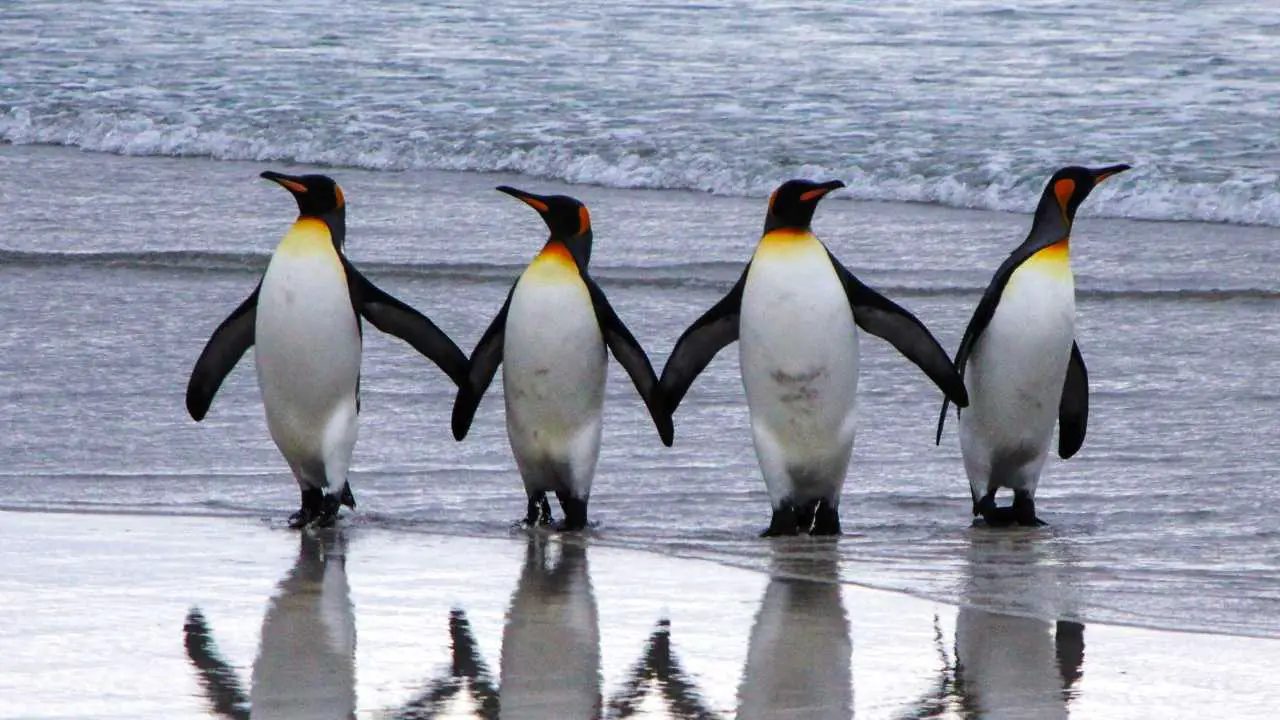
Animals like leopard seals, orca or killer whales, sharks, and sea lions eat penguins. Penguins in Antarctica have no known natural land predators. However, penguins from Australia, especially fairy penguin (or the Australian little penguin) species have many land predators including snakes, foxes, feral dogs, and cats.
South American penguin species also have many land predators including puma, feral cats, and dogs. Warrah (Falkland Island wolf) also hunted penguins before its extinction. Black rate and Norway rate are known to prey on penguin eggs.
The major land predators of the African penguin species include Cape genet, mongoose, and caracal. Domestic dogs and cats may also prey on the adult penguins and their chicks.
The avian or bird predators of penguins include giant petrels, skuas, snowy sheathbills, and kelp gulls. The bird predators usually take chicks and eggs, but occasionally prey on injured or sick adults.
The following is the list of animals that eat penguins, their chicks, and eggs:
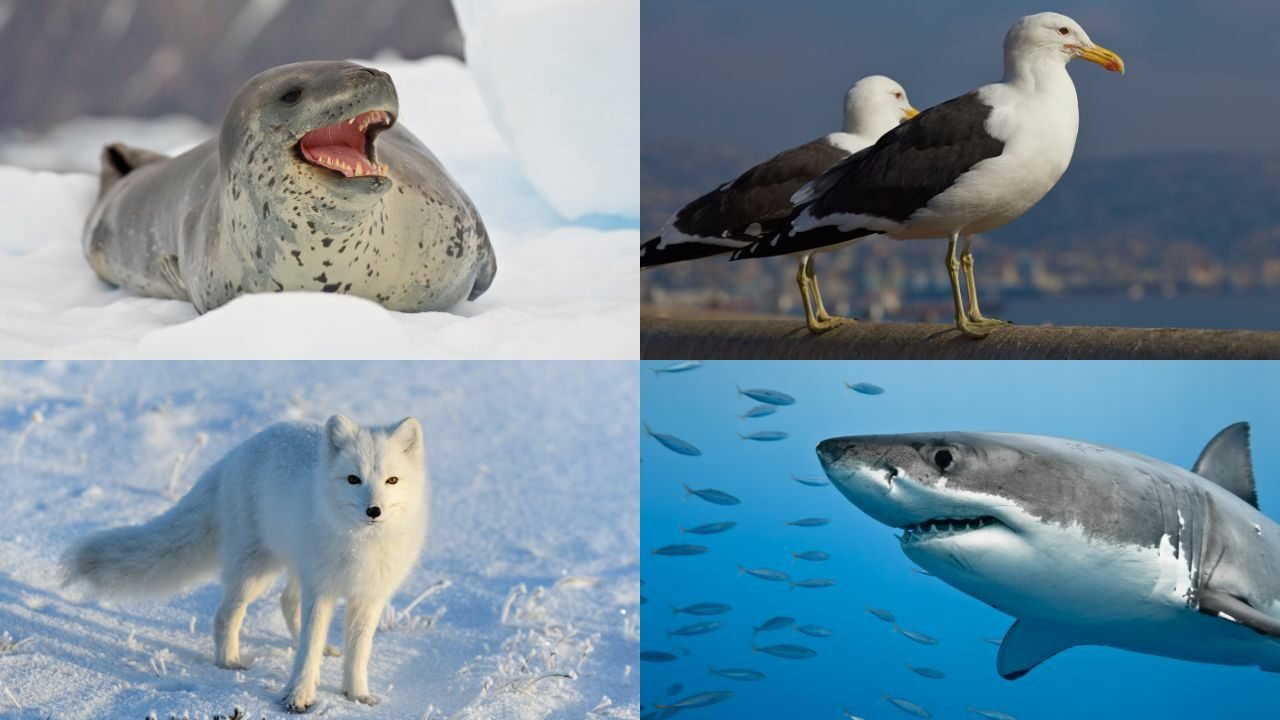
- Leopard seals
- Orcas
- Sharks
- Bottlenose dolphins
- Sea lions
- Pumas
- Foxes
- Feral dogs
- Feral cats
- Warrahs
- Snakes
- Black rats
- Norway rats
- Cape genet
- Mongoose
- Caracal
- Giant petrels
- Skuas
- Snowy sheathbills
- Kelp gulls
What Eats Penguins In Antarctica?

There are 17 to 19 living species of penguins out of which 6 species are found in Antarctica (some also inhabit the sub-Antarctic region as well). They usually face no threat from land predators there. Their main predators are aquatic mammals including leopard seals, Antarctic fur seals, sub-Antarctic fur seals, sea lions, and killer whales. Birds like skuas, giant petrels, snowy sheathbills, and kelp gulls prey on chicks, eggs, and sometimes on weakened or injured individuals.
What Eats Penguins In Australia?
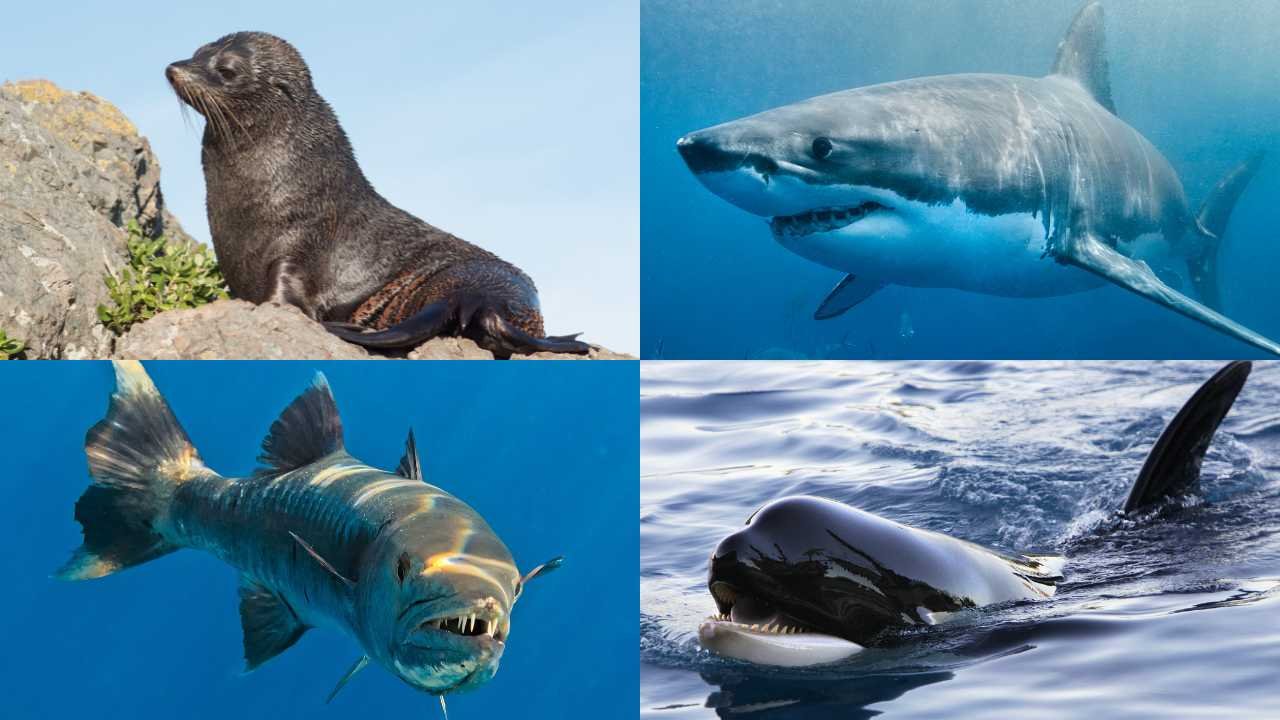
The main penguin species that are found in Australia are the Australian little penguin (which is also found in the Otago region of New Zealand) and the little blue penguin or fairy penguin (which is also found along most of New Zealand’s coastlines). Their marine predators include long-nosed fur seals, leopard seals, Australian sea lions, killer whales, sharks, and barracouta.
Native reptile species in Australia like tiger snake and Rosenberg’s monitor are known to prey on younger penguins and chicks. The common blue-tongued skinks usually take the penguin eggs.
In 2012, the Tasmanian devils were introduced into Maria Island which destroyed the entire population of Australian little penguins. Other introduced predators that greatly prey on penguin’s chicks and eggs include cats, dogs, rats, ferrets, and stoats.
The bird predators that take younger and injured (or sick) individuals, chicks, and eggs include white-bellied sea eagles, kelp gulls, Pacific gulls, brown skuas, and currawongs.
What Eats Penguins In New Zealand?
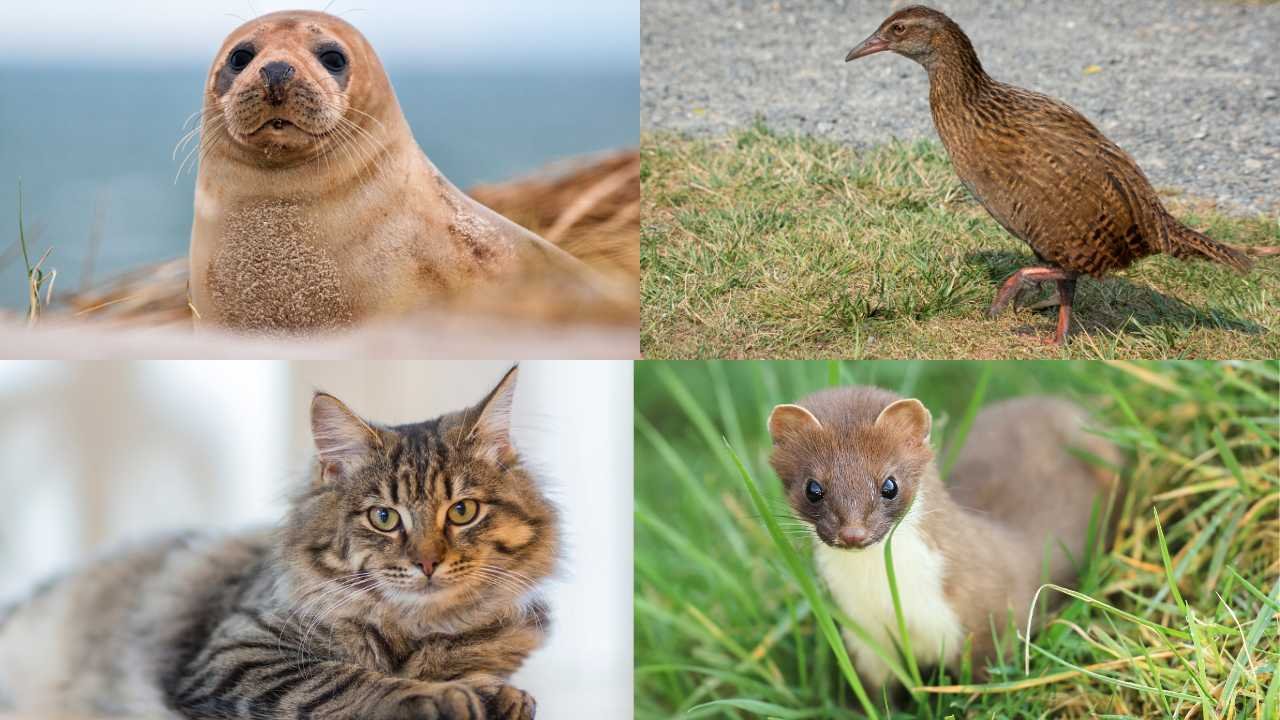
In the total 17 or 19 living species of penguins, three species are endemic to New Zealand; yellow-eyed penguin, Fiordland penguin, and the erect-crested penguin. Another penguin species known as the Snares penguin is found in the Snares Islands, a territory of New Zealand. Snares penguins are also sometimes found in Tasmania and southern Australia out of New Zealand.
The main aquatic animals that eat these penguins include leopard seals, Hooker’s seals, killer whales, sea lions, and sharks. Birds of prey like skuas and petrels prey on their chicks and eggs. Introduced animal species in their habitat like stoats, rats, dogs, and cats are the biggest predators of their chicks and eggs. Weka (Gallirallus australis) is a flightless bird species introduced into the habitat range of Fiordland penguins. In the Open Bay Island, weka is known to cause up to 20% mortality of penguin chicks and about 38% mortality of eggs.
The following is the list of main predators that eat penguins, their chicks, and eggs in New Zealand:
- Leopard seals
- Hooker’s seals
- Killer whales
- Sea lions
- Sharks
- Skuas
- Petrels
- Weka
- Stoats rats
- Dogs
- Cats
What Eats Penguins In America?
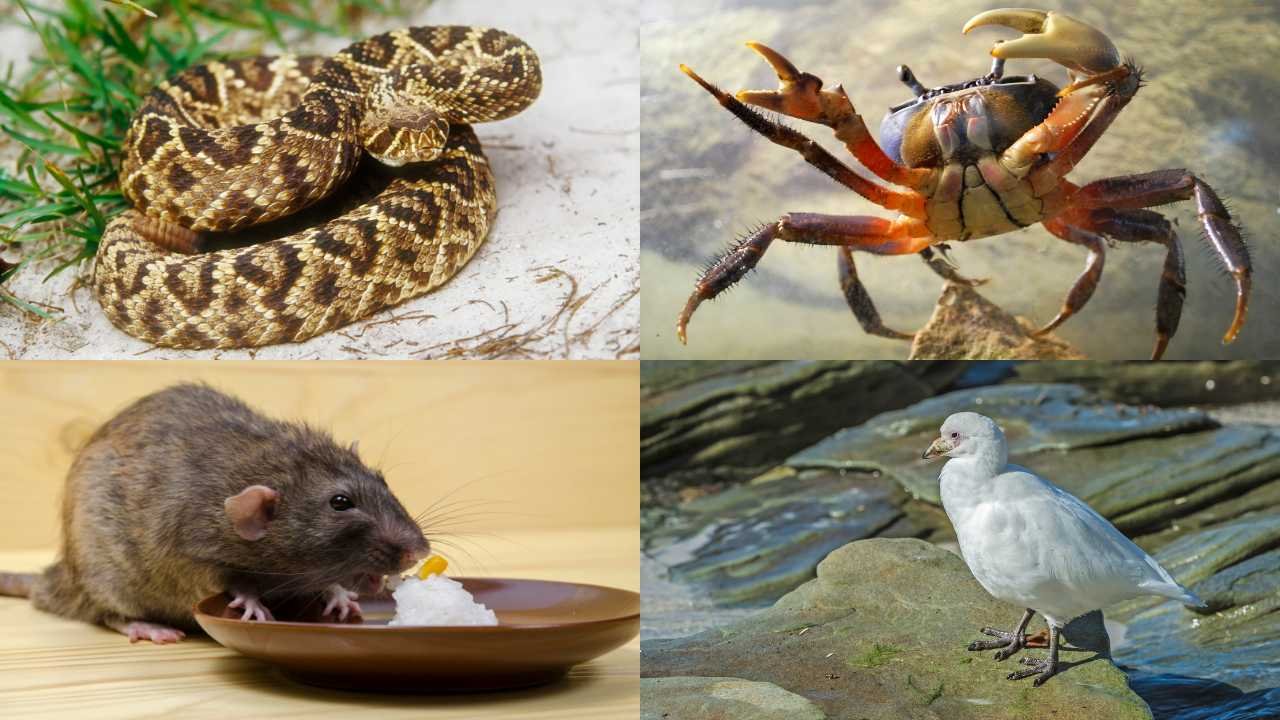
The animals that eat penguins in America include aquatic mammals like leopard seals, killer whales, Antarctic fur seals, sea lions, and sharks. Puma is the major land predator of Magellanic penguins that prey on both adults and chicks.
Of all the penguin species, about seven are found in America. The most notable are the king penguin, Magellanic penguin, Humboldt penguin, and Galapagos penguin (endemic to the Galapagos Island of Ecuador).
The Galapagos penguins have many land predators like snakes, crabs, and rice rats. Galapagos hawks and short-eared owls also take the younger, sick, or injured adults, chicks, and eggs.
Bird predators include giant petrels, skuas, snowy sheathbills, and kelp gulls that usually take chicks and eggs. However, they will also take weakened adults and scavenge on the carcasses of dead chicks and young.
What Eats Penguins In Africa?
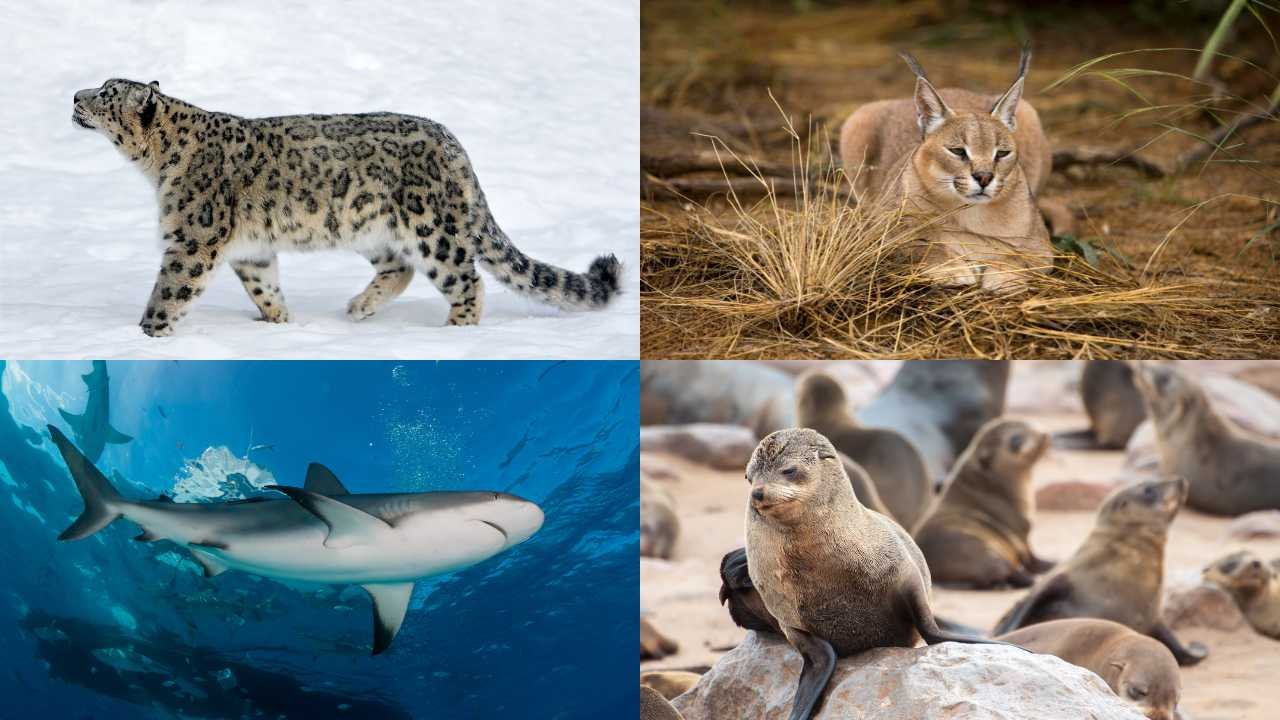
The African penguin or South African penguin or Cape penguin is the only penguin species found in Africa. Sharks, killer whales, and fur seals are the primary aquatic animals that eat African penguins. Their land predators include leopards, Cape genets, mongooses, caracals, domestic dogs, and cats that usually prey on the nesting adult penguins and their chicks. Birds like kelp gulls, giant herons, and African sacred ibis take chicks and eggs.
Do Polar Bears Eat Penguins?
No, polar bears do not eat penguins because both inhabit totally different geological regions. Penguins inhabit the Southern Hemisphere while polar bears are endemic to the Northern Hemisphere.






Leave a Reply